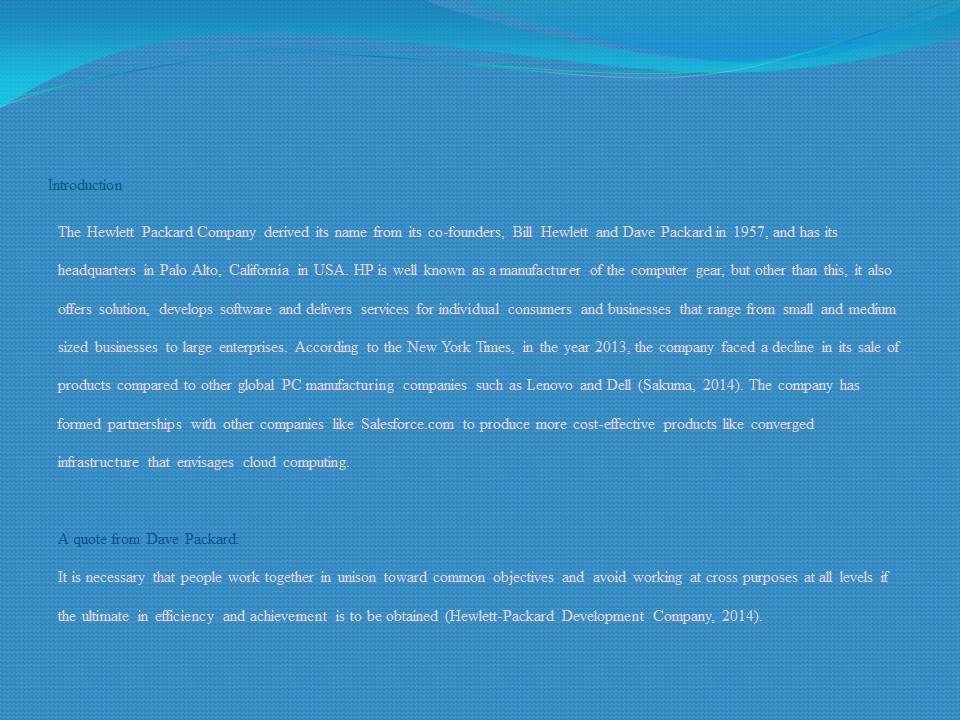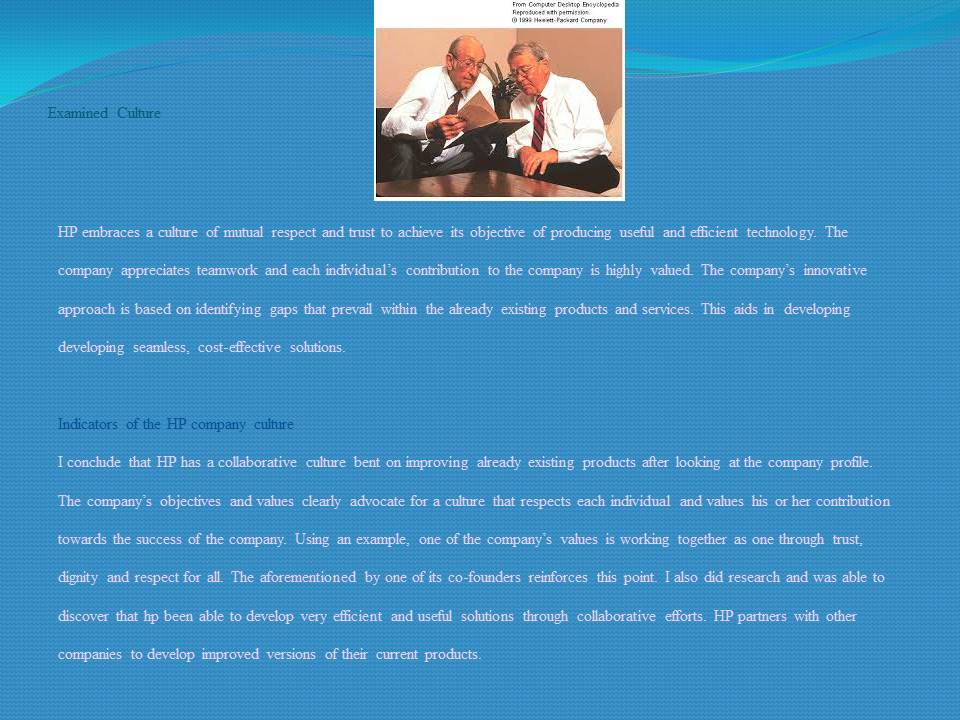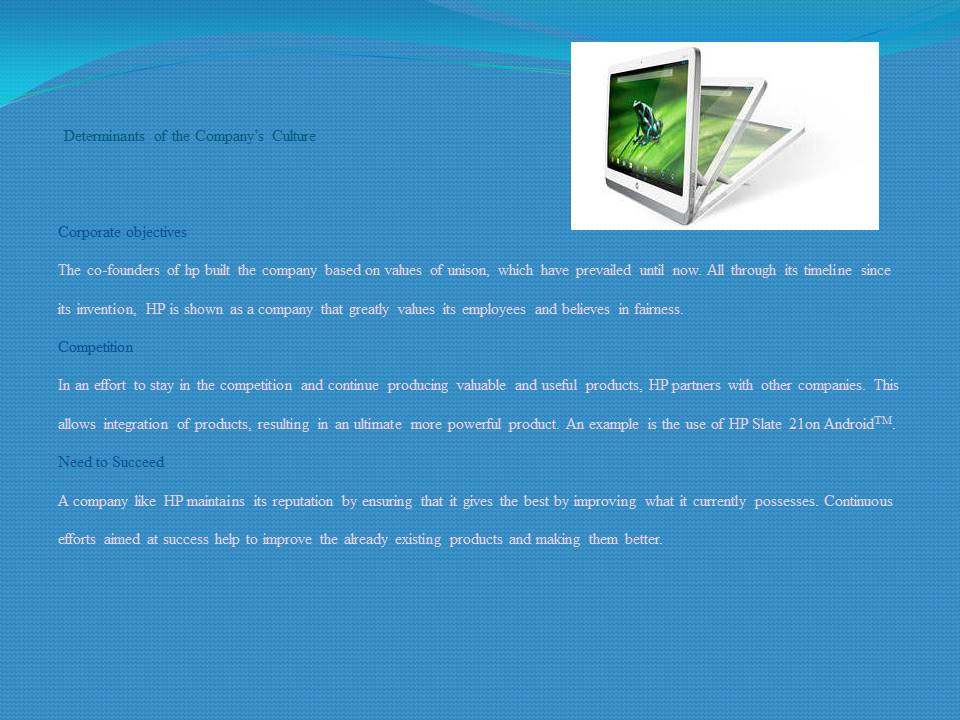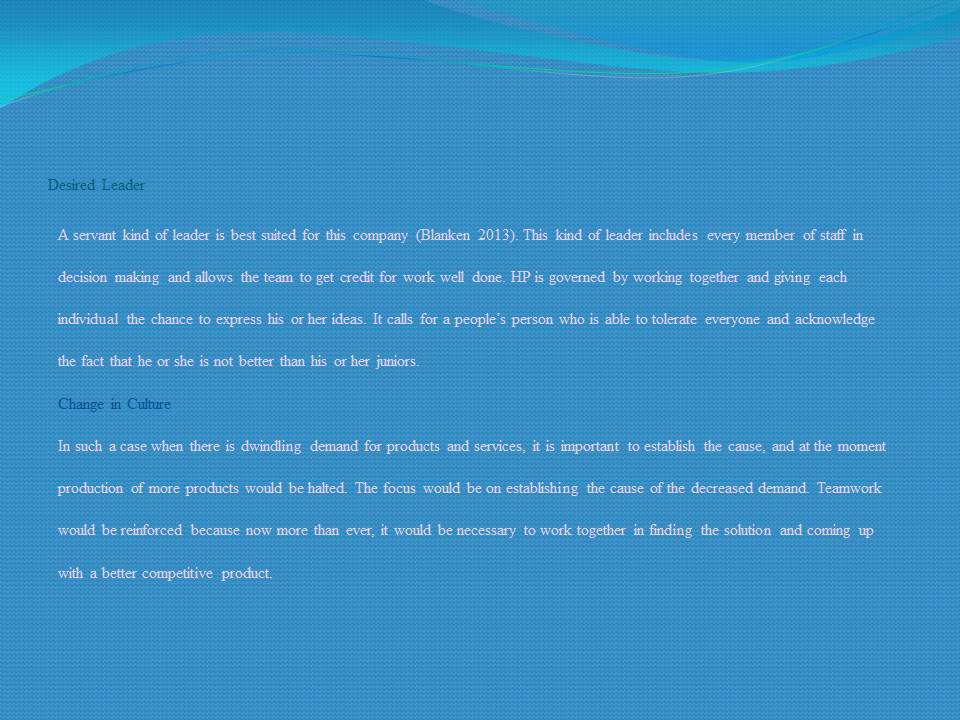Introduction
The Hewlett Packard Company derived its name from its co-founders, Bill Hewlett and Dave Packard in 1957, and has its headquarters in Palo Alto, California in USA. HP is well known as a manufacturer of the computer gear, but other than this, it also offers solution, develops software and delivers services for individual consumers and businesses that range from small and medium sized businesses to large enterprises. According to the New York Times, in the year 2013, the company faced a decline in its sale of products compared to other global PC manufacturing companies such as Lenovo and Dell (Sakuma, 2014). The company has formed partnerships with other companies like Salesforce.com to produce more cost-effective products like converged infrastructure that envisages cloud computing.
A quote from Dave Packard: “It is necessary that people work together in unison toward common objectives and avoid working at cross purposes at all levels if the ultimate in efficiency and achievement is to be obtained (Hewlett-Packard Development Company, 2014).”

Examined Culture
HP embraces a culture of mutual respect and trust to achieve its objective of producing useful and efficient technology. The company appreciates teamwork and each individual’s contribution to the company is highly valued. The company’s innovative approach is based on identifying gaps that prevail within the already existing products and services. This aids in developing developing seamless, cost-effective solutions.
Indicators of the HP company culture
I conclude that HP has a collaborative culture bent on improving already existing products after looking at the company profile. The company’s objectives and values clearly advocate for a culture that respects each individual and values his or her contribution towards the success of the company. Using an example, one of the company’s values is working together as one through trust, dignity and respect for all. The aforementioned by one of its co-founders reinforces this point. I also did research and was able to discover that hp been able to develop very efficient and useful solutions through collaborative efforts. HP partners with other companies to develop improved versions of their current products.

Determinants of the Company’s Culture
Corporate objectives
The co-founders of hp built the company based on values of unison, which have prevailed until now. All through its timeline since its invention, HP is shown as a company that greatly values its employees and believes in fairness.
Competition
In an effort to stay in the competition and continue producing valuable and useful products, HP partners with other companies. This allows integration of products, resulting in an ultimate more powerful product. An example is the use of HP Slate 21on AndroidTM.
Need to Succeed
A company like HP maintains its reputation by ensuring that it gives the best by improving what it currently possesses. Continuous efforts aimed at success help to improve the already existing products and making them better.

Desired Leader
A servant kind of leader is best suited for this company (Blanken 2013). This kind of leader includes every member of staff in decision making and allows the team to get credit for work well done. HP is governed by working together and giving each individual the chance to express his or her ideas. It calls for a people’s person who is able to tolerate everyone and acknowledge the fact that he or she is not better than his or her juniors.
Change in Culture
In such a case when there is dwindling demand for products and services, it is important to establish the cause, and at the moment production of more products would be halted. The focus would be on establishing the cause of the decreased demand. Teamwork would be reinforced because now more than ever, it would be necessary to work together in finding the solution and coming up with a better competitive product.

References
Blanken, R. (2013). 8 Common Leadership Styles. Washington: American Society of Association Executives.
Hewlett-Packard Development Company, L.P. (2014). Web.
Sakuma, P. (2014). Hewlett-Packard Company. The New York Times. Web.